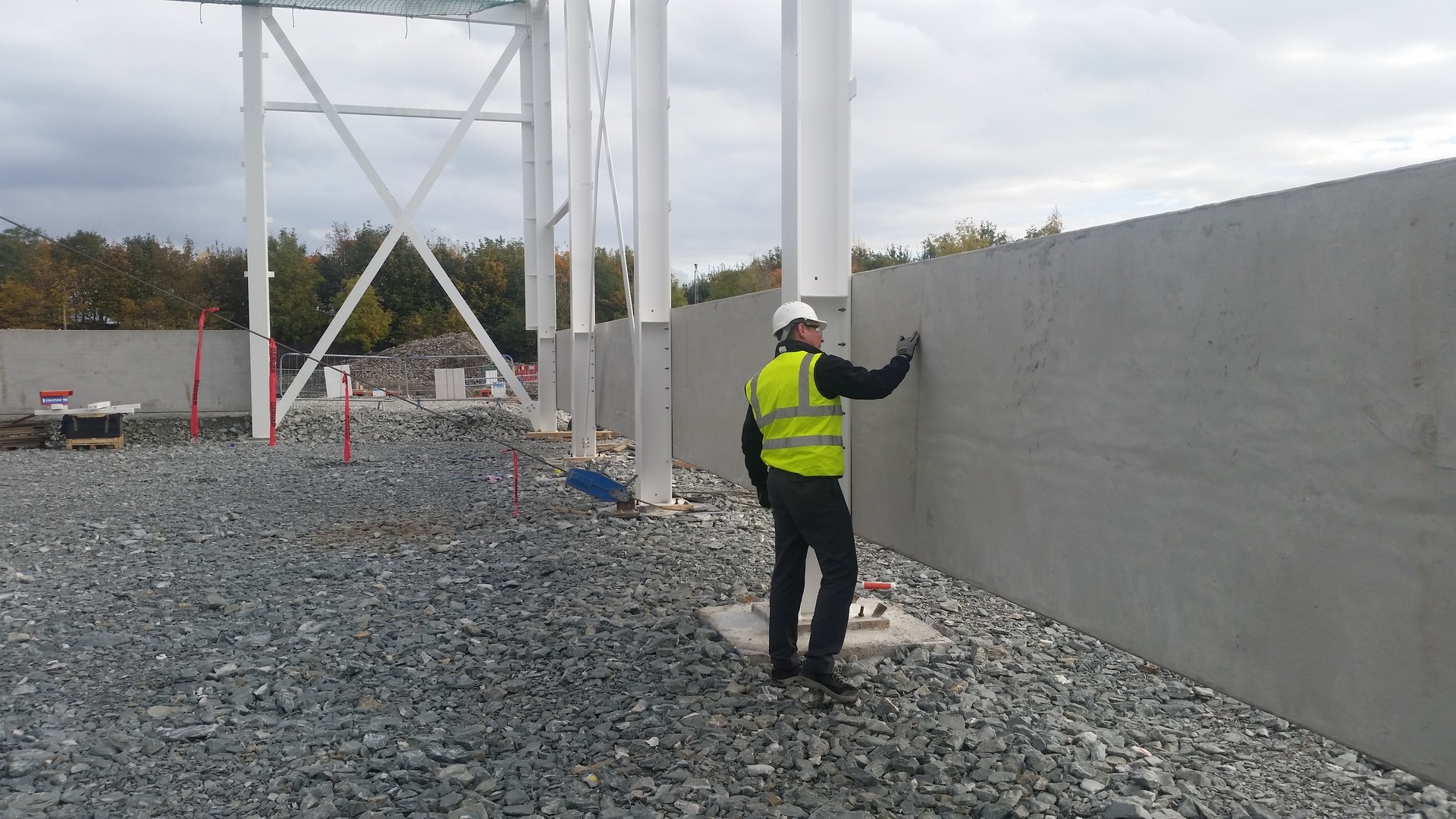 Assessing concrete substrate prior to waterproofing application
Assessing concrete substrate prior to waterproofing applicationOften faced with the challenge of precast retaining walls and the waterproofing solutions to fit?
Here I highlight waterproofing strategies for concrete retaining walls constructed off-site. Particularly those that can be quickly applied in all weathers, without specialist skills – ultimately helping you to save costs and ensure speedier project delivery.
Precast walls are usually produced using high strength concrete, offering good dimensional accuracy, as well as smooth surface finish. It’s characteristic of these concrete retaining walls that their installation requires multiple below ground joints to be protected. With this in mind, we occasionally get involved with advising on changes to the design of precast units, or the foundations they are installed upon, to ensure untreatable situations do not arise.
Some retaining walls are of course intended simply to hold back the ground behind them, either for landscaping purposes or to maximise the use of a sloping site. While these are usually designed with multiple weep-holes to relieve groundwater pressure, they require a cost-effective impervious membrane, across the earth side, to prevent staining of the visible face. Rapidly applied bitumen based liquid solutions, such as RIW LAC, are normally preferred.
One such example is Llandough Hospital. With a steep sloping site and precast walls, the waterproofing solution chosen was a combination of LAC and Sheetseal 226 to reinforce the joints and ensure backfilling of the walls could be achieved. The liquid applied system also provided a greater tolerance to poor weather conditions, whilst offering time benefits for the contractor and reducing the overall cost of the waterproofing treatment.
Where a precast retaining wall encloses a habitable space or houses valuable equipment, the requirement would suit a membrane able to completely control water ingress. On the other hand, liquid applied systems such as RIW Flexiseal Pro or LAC are better suited to more complex shapes including convex or concave curves.
Liquid applied systems come in a variety of different chemistries to suit project specific requirements. For example, a cement based coating is ideal for cold or damp site environments. On the other hand, for a project where controlling costs is the primary driver, bitumen solutions such as LAC are usually better suited.
Liquid applied membranes that are able to provide a barrier against the ingress of methane or radon may also be necessary, depending on ground conditions. Where hazardous gases can enter through joints between units or cracks in the structure, a membrane capable of accommodating movement is advisable; Flexiseal Pro, LAC or Sheetseal GR are examples of such products.
Precast retaining walls can present many challenges when it comes to waterproofing however, with the correct knowledge and advice the best solutions can be utilised. Through early engagement with the architect, RIW can offer both design guidance and help coordinate installation works.
For more information on the products mentioned or on waterproofing precast retaining walls, give our sales team a call on 01753 944200.
 By James Clarke, Technical Advisor at RIW Ltd.
By James Clarke, Technical Advisor at RIW Ltd.



